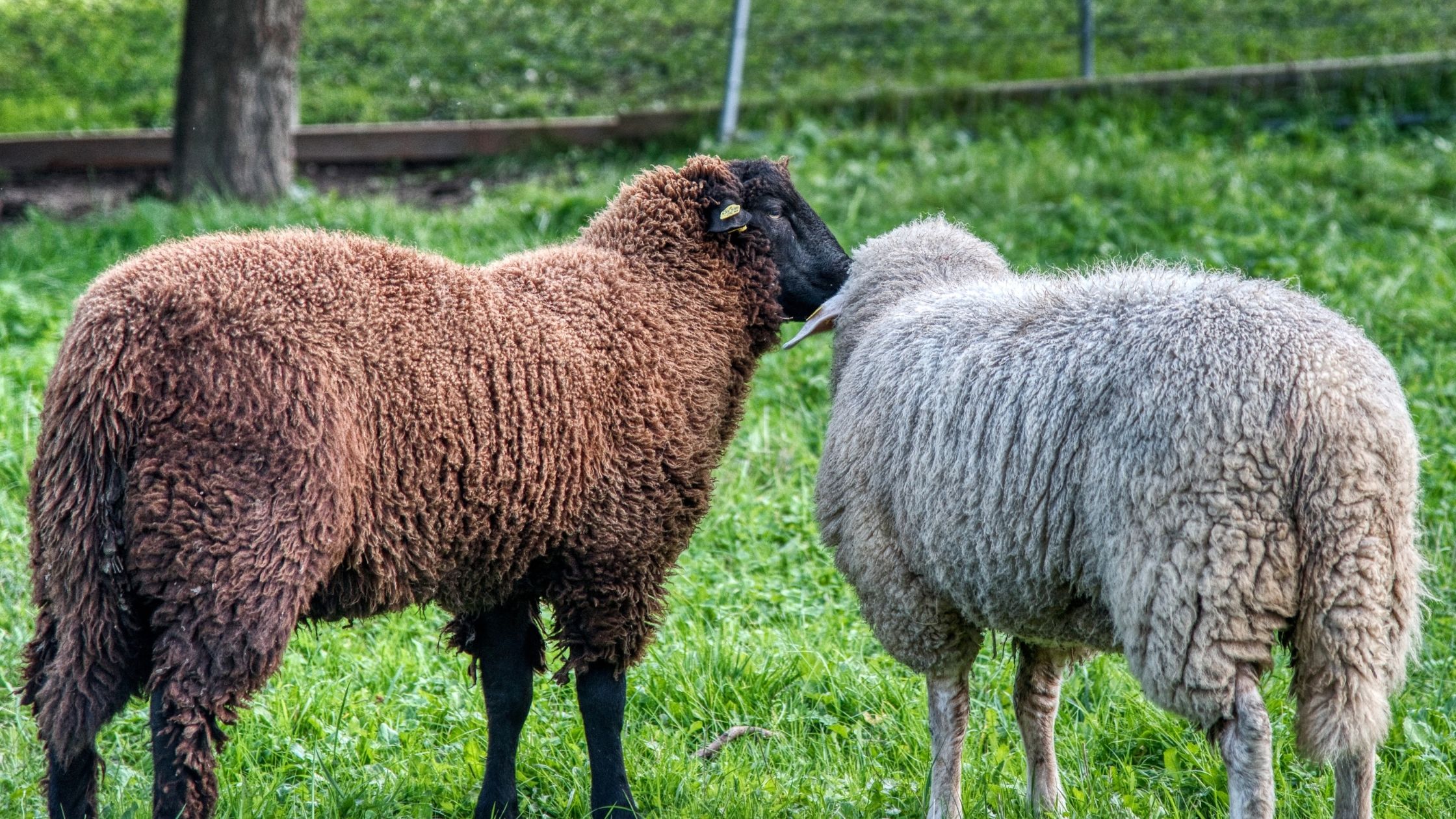The Bible informs us that God is our Creator, the Builder of reality, and He reveals Himself in what He has made:
For since the creation of the world God’s invisible qualities—his eternal power and divine nature—have been clearly seen, being understood from what has been made, so that people are without excuse.
Romans 1:20 NIV
We can see God’s wisdom in the works He has created:
How many are your works, Lord! In wisdom you made them all; the earth is full of your creatures.
Psalms 104:24 NIV
Even the animals reveal truths to those who have a Biblical worldview:
“But ask the animals, and they will teach you, or the birds in the sky, and they will tell you;
or speak to the earth, and it will teach you, or let the fish in the sea inform you.
Job 12:7-8 NIV
Could it be true?
But there is a story in the Bible that has confused many a faithful believers, some have wondered if this could really be true. It is the story of Jacob stripping bark off tree limbs in order to get his sheep to give birth to streaked, speckled, or spotted offspring.
You can find it in Genesis chapter 30. Having completed his fourteen years of labor as payment to Laban for his wives Leah and Rachel, Jacob was planning on returning home to his father Isaac. But Laban wanted him to stay, so the two negotiated a payment arrangement for Jacob: All the new lambs born that were solid colored would be Laban’s, but any born that were streaked, speckled, or spotted would be Jacob’s.
As soon as the agreement was reached, however, Laban sought to undercut Jacob’s earning by removing all the streaked, speckled, and spotted sheep from the flocks. The very day the agreement was made, Laban had his sons take away any sheep that did not have solid fur far so that they wouldn’t breed with the solid-colored sheep.
In response, we have the strange account of Jacob peeling the bark off tree branches and placing the branches in the sheep’s drinking water in order to breed more lambs that were streaked, speckled, or spotted.
37 Jacob, however, took fresh-cut branches from poplar, almond and plane trees and made white stripes on them by peeling the bark and exposing the white inner wood of the branches. 38 Then he placed the peeled branches in all the watering troughs, so that they would be directly in front of the flocks when they came to drink. When the flocks were in heat and came to drink, 39 they mated in front of the branches. And they bore young that were streaked or speckled or spotted. — Genesis 30:37–39 NIV
What does Science say?
This story has generated a wide range of responses. Critics have used it to mock the Bible. Others try to explain it as Jacob being superstitious. But science has now documented that this story is simply the outworking of the laws of biology—how God created reality to work.
There is a gene—the agouti gene—that determines the color the animal’s fur. If all the agouti genes in the cells are turned either on or off, the animal will be solid-colored. But if this gene is turned on in some cells and off in others, the animal will be speckled, streaked, or spotted. In studies of cloned mice (genetically identical), those with all of their agouti genes turned on have solid blonde fur, while those that have all of their agouti genes turned off have solid brown fur. But the mice that have some of the agouti genes turned on and some turned off have streaked, speckled, or spotted fur.
But what turns the agouti gene on or off? The diet of the mother when she is pregnant! If the diet has certain nutrients, the gene is turned either on or off, thus changing the expression and the fur of the animal. And this change will pass down up to four generations, thereby increasing the number of speckled, spotted, or streaked offspring.
But is this true only in mice? No! Recent research has documented that the branches of the trees chosen by Jacob do, in fact, provide the nutrients needed to alter the expression of the agouti gene, which does, in turn, alter the color of the lambs born.
Our Scientific God
Jacob’s actions were not superstition, but rational, scientific, and consistent with how God created reality to operate. The Bible is again proven to be true!
That’s why when you read stories in the Bible that seem strange or weird, don’t doubt the Bible; instead, search for the evidence, truth, facts, and insights and come to a reality-based understanding of the true meaning of what is written and described.
Rightly understood, the Bible and science always agree—for our God is the Author of both!
 For even more from Dr. Tim Jennings check out his book The God-Shaped Brain,
For even more from Dr. Tim Jennings check out his book The God-Shaped Brain,
What you believe about God actually changes your brain.
Brain research in neuroscience has found that our thoughts and beliefs affect our physical, mental, and spiritual health. Mind and body are interrelated, and we are designed for healthy relationships of love and trust. When we understand God as good and loving, we flourish.
Unfortunately, many of us have distorted images of God and mostly think of him in fearful, punitive ways. This leads us into unhealthy patterns of self-defeating behaviors and toxic relationships. But our lives can change when God renews our minds with a truer picture of him.


“Recent research has documented that the branches of the trees chosen by Jacob do, in fact, provide the nutrients needed to alter the expression of the agouti gene, which does, in turn, alter the color of the lambs born.”
Please can you be more precise and give the details of when and where this research was carried out and by whom? What quantity of nutrients from the peeled branches would be needed to affect the agouti genes?
This seems to be a clear example of selection of sheep by human preference after natural selection has thrown up different colour types in the species. I used to work with sheep.
The Hebrews must have found it difficult to maintain good quality stock animals, if every year the best of their herds and flocks, the unblemished lambs and calves, – so many thousands, were selected out and sacrificed to god.